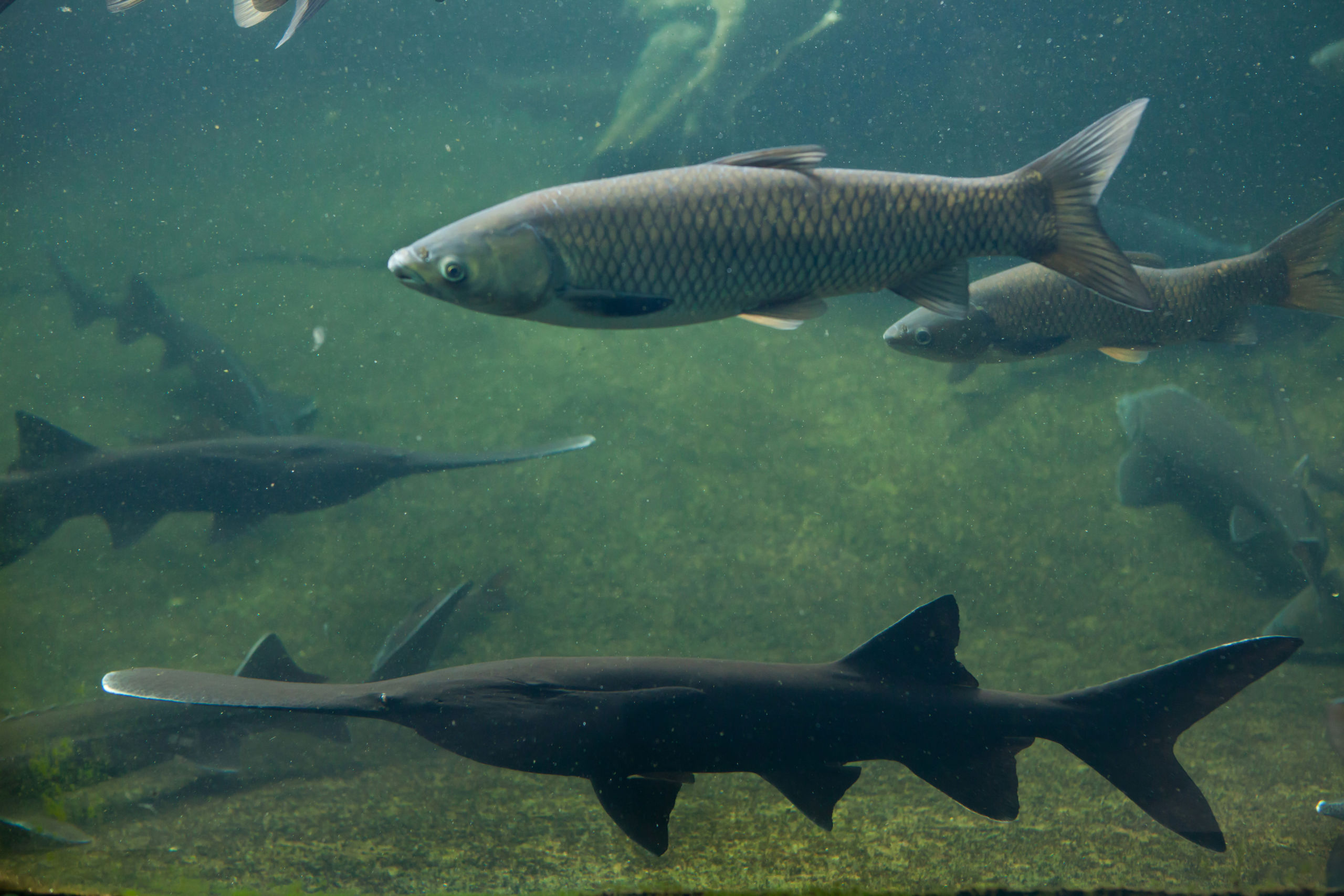Extinction is Forever: The End of the Chinese Paddlefish

A report by the Yangtze River Fisheries Research Institute declared the Paddlefish, a once populous species inhabiting the brackish section of the lower Yangtze and Yellow rivers, is extinct.
The new study confirms suspicions that have been growing for over a decade. Chinese Paddlefish have not been observed in the wild since the early 2000s and are not found anywhere in captivity. The study concludes that the Chinese Paddlefish population was functionally extinct in the 1990s, in other words – its population had declined to a point where it could no longer play its former role in the ecosystem. In the 1970s, over 25 tons of Chinese Paddlefish was harvested annually from the Yangtze and Yellow river basins. How could a species go from sustaining mass commercial fishing to complete extinction in under 50 years?
The Chinese Paddlefish is, or was, anadromous, meaning that it spawns upriver. These fish, which could grow up to 7ft in length, would migrate from the floodplain zone, the end of the river closest to the sea, up into the freshwater tributaries where they would lay their eggs. This behavior of sea to freshwater migration is common among many fish species and some are even able to chemically recognize the rivers in which they spawn.
However, beginning in the 1970s, China began constructing the Gezhouba Dam. This dam, completed in the late 1980s, was intended to provide hydroelectric power to the nearby city of Yichang. Today it boasts an output of 2,715 MW. However, in completing this massive construction project, China inadvertently blocked the Chinese Paddlefish’s ability to migrate up and downstream. Scientists cite the Gezhouba Dam as the primary cause of the Paddlefish’s demise. They point to the lack of “fish ladders” (which are actually inefficient), “trapping and hauling” (which is stressful to fish), or “fish tubes” (which you may know more colloquially as “Salmon Cannons”).
But why is the fate of the Chinese Paddlefish important? There are a multitude of reasons. In terms of their impacts on the river’s biodiversity, the loss of a top predator can be detrimental. Species that occupy higher trophic levels (meaning they eat higher up on the food chain) are essential to regulating the populations of species beneath them. Thus, the loss of the Chinese Paddlefish has likely led, or will lead, to cascading effects in the food chain of the Yangtze River. Some species’ populations will expand, and others will shrink, drastically altering the natural order of the river’s ecosystem.
In terms of human impacts, Chinese Paddlefish were once a prized haul and contributed significantly to the diets of communities that surrounded the river for thousands of years. The loss of the Chinese Paddlefish is a loss in both the economic returns and the cultural heritage of the region.
But perhaps most significant about the extinction of the Chinese Paddlefish is what it implies about our relationship with the world around us. The Chinese Paddlefish survived relatively unchanged since 150 million years ago. This was a species which outlived the dinosaurs and survived the asteroid impact 65 million years ago. The fact that such a well-adapted, successful species could then disappear within a mere 50 years due to human activity demonstrates how profoundly we have changed the world, and how quickly. If we want to avoid repeating our mistakes with the Chinese Paddlefish, we will need to fundamentally reassess how we, as a society, regard nature. Nature is not an infinite, unchanging resource for people to exploit, it is a delicate gift whose protection and stewardship we are tasked with. It will take a great paradigm shift in order to balance the needs of nature and society.
Fortunately, this shift is already taking place. Youth are more concerned about the climate and environment than ever before in history, environmental education is more widespread than ever, and both governments and businesses are being forced to respond to growing public outcry with stronger measures. In fact, this year marks the beginning of a ban on commercial fishing in the Yangtze River to allow aquatic wildlife to recover.
While it is too late to save the Chinese Paddlefish, it is estimated that there are still several thousand species near the brink of extinction that could be saved. Whether or not these species will meet the same fate as the Chinese Paddlefish depends on whether people are willing to take the time to research and seriously consider the impacts that their actions are having on the environment.
While there is still hope to save the Earth at large, we will forever have to live with the knowledge that whatever world we create will be one without the Chinese Paddlefish.
About Global Preservation Society
Located in Weston, CT The Global Preservation Society is a 501(c)(3) tax-exempt nonprofit organization which strives to foster a transnational dialogue among young leaders on the topic of sustainability and environmental stewardship to help guide communities toward a sustainable path
We are inspired by the Sustainable Develop Goals (SDGs) set forth by the United Nations, and the concept of global citizenship – the idea that there is one planet to which we are all connected; and thus, all people have a civic duty to care for each other and the planet. If you would like more information please send us an email!
